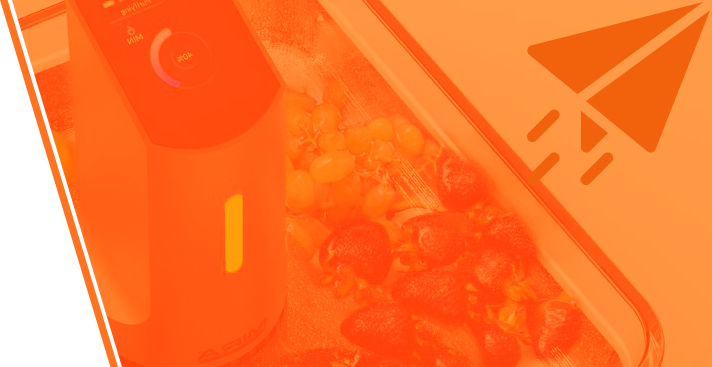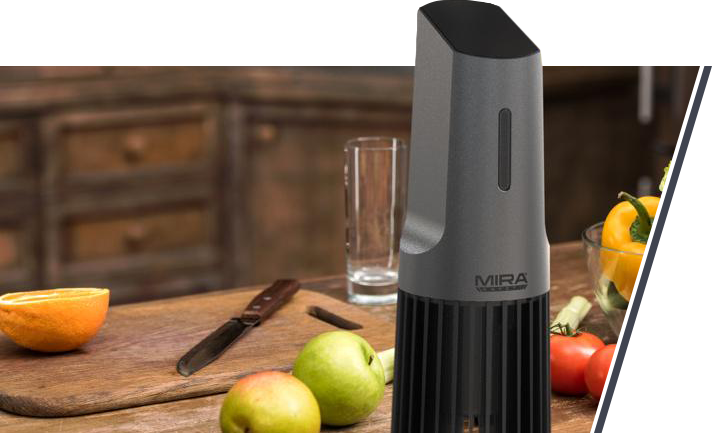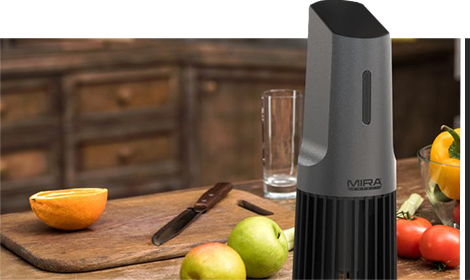"This is 100% organic."
I look over at the woman speaking to her friend and notice she's holding a tomato with no labels, just a white sign next to a box with the word: "ORGANIC." Her friend was impressed, encouraging her to buy the product immediately because it would "save the seals" and make for a healthier alternative to the dull, conventional tomato sitting two boxes away.

(Image source: Image courtesy of NutritionYouCanTrust)
Don't get me wrong. As you can see in the above photo, there's a clear difference (visually speaking) between these two tomatoes. The organically-grown tomato on the left clearly looks more appetizing.
It's juicier, redder, and overall looks fresher. Does this mean it beats the conventional tomato in terms of nutritional value? Is organic farming helping the environment?
Unfortunately … the answer is no.
My most recent article mentioned the dangers of long-term glyphosate use, the active ingredient in Roundup, a popular herbicide that kills weeds at its roots. I briefly mentioned that organic produce can be a good alternative to genetically modified (GMO).
But organics aren't always healthier for you, your friends and family, or the earth.
Today we’re going to look at the many problems with organic food. Contrary to what many would think, herbicides and pesticides aren't always the enemy. Yes, many pesticides (like glyphosate) should have better regulations. But the solution isn’t as simple as tossing out all your GMO products and going on an organic shopping spree.
It's important to know what makes something organic, the types of organic labels in the market, the facts/falsehoods of organic farming, and if organic produce is worth the expensive price tag.
Table of Contents
-
01
The Origin of Organic Farming
-
02
Raw, All-Natural Organic Food Facts
-
03
The Real Deal or Complete Fraudulence?
-
04
Victims of Organic Food Shopping
-
05
Conclusion
The Origin of Organic Farming
In 1940, a man named Lord Northbourne first coined the phrase: "organic farming." This was during an age when agriculture was rapidly industrializing across the world. But a small group of farmers from Europe, Australia, and the United States didn’t like where things were headed.

Rudolf Steiner, the "spiritual scientist," set an example that led farmers to join forces and form several associations. One of the most prominent associations today is Demeter International in Germany, which has a holistic approach to agriculture mixed with the aforementioned spiritual components.
Then in 1972, the International Federation of Organic Agriculture Movements (IFOAM) was formed. According to the American Council on Science and Health (ACSH), the four central tenets of IFOAM were that organic farming should:
-
Sustain and enhance the health of the soil, plants, animals, and humans as one and indivisible.
-
Be based on the living ecological systems and cycles, work with them, emulate them and help sustain them.
-
Build relationships that ensure fairness concerning the environment and life processes.
-
Be managed prudently and responsibly to protect the health and well-being of current and future generations and the environment.
Compared to IFOAM's more conceptual and lofty principles, the U.S. National Organic Program (NOP) is more practical and detailed in specifics. The NOP is a federal regulatory program that creates and enforces rules for organically produced products in the U.S. It ensures that farms and businesses meet the United States Department of Agriculture's (USDA) standards, such as annual inspections and certifications. The NOP promises to uphold the integrity of the USDA organic seal.
The USDA "Seal of Organic Approval"

If you have a household food product with the seal above, that means the product uses authorized natural and synthetic ingredients with accepted methods (meaning no genetic engineering). The farm it came from, if USDA-certified, uses physical, mechanical, and biological farming methods that should support biodiversity and soil health. And this is crucial; pesticides are still allowed on these certified organic products, but only in limited amounts, and they need to be USDA-approved.
Let's be clear. Pesticides are still allowed even on organic USDA produce.
No organic produce is 100% pesticide-free. However, some pesticides are derived from natural substances rather than their synthetic counterparts.
Many people hear the word "organic" and assume a product must be free of all herbicides and pesticides, which is false. And as we talked about in our glyphosate article, it's the dose that makes the poison.
Simply put—“natural” doesn't always mean better or healthier.
People frequently associate organic foods with being "good" or healthy". But its effect on our health always comes down to how much we ingest.
For example, organic farming sometimes uses a derivative of copper as a fungicide. When it's over-ingested, it can be toxic to humans. Yet, in the right amounts, it's not a concern, according to Carl Winter, Ph.D., Extension Food Toxicologist at the University of California.
Winter states that there are three pillars of risk that he and many other toxicologists look for; they include:
-
how much is really in the food?
-
how much of it are we eating? And
-
how bad is the amount we're ingesting?
4 Types of "Organic" Labels

(Image source: Image courtesy of NPR)
It’s important to remember that not all organic products are created equal.
In fact, there are four different “organic” classifications, each with different qualifications.
This detail is great for marketers and companies but makes things more difficult for consumers.
Let's admit it, using organic products makes us feel like we’re doing the right thing … but you still have to be mindful about what you're putting on the dinner table or feeding your family.
Here are the labels you might see and what each means, according to the USDA:
Note: Principal display panel (PDP) is the sticker or label you see on the front of the product. It's what customers see immediately. An information panel (IP) is what's on the ingredient list.
-
1. 100% Organic:
-

On any product with 100% organic ingredients (excluding salt/water).
-

Most are labeled with this if raw, unprocessed, or minimally processed farm crops.
-

PDP: May show the USDA organic seal or the 100% organic claim.
-

IP: Identifies the organic ingredients or has an asterisk or other (e.g., organic basil).
-
2. Organic:
-

On any product with a minimum of 95% organic ingredients (again excluding salt/water)
-

Up to 5% of ingredients may be nonorganic agricultural or nonagricultural products from the National List.
-

PDP: May show the USDA organic seal or organic claim.
-

IP: Identifies the organic ingredients or has an asterisk or other.
-
3. Made with Organic ______:
-

The product contains at least 70% organically produced ingredients (excluding salt/water) with detailed constraints on the components that compromise the nonorganic portion.
-

PDP: May show "Made with organic ____ (up to three ingredients or categories), must NOT have the USDA organic seal anywhere on the product.
-

IP: Same as the previous.
-
4. Specific Organic Ingredient Listings:
-

Lists specific ingredients in the list/statement on the product, for example, "Ingredients: water, barley, beans, organic tomatoes, salt."
-

PDP: Must NOT include USDA organic seal anywhere or the word "organic."
-

IP: May only list the certified organic ingredients, as mentioned above.
The only exception to these rules is producers who profit less than $5,000 in organic products. They are not required to apply for organic certification. Still, they must comply with organic production/handling requirements, including record keeping (up to three years). These products cannot display the USDA-certified organic seal, nor will they be considered "organic ingredients."

(Image source: Image courtesy of Food Business News)
And another critical mention, the word "natural" on a food label does NOT mean what you may think. It means no artificial coloring, flavors, or preservatives. It has nothing to do with the methods and materials used to grow the product's ingredients.
It's easy to confuse "natural" and "organic" to mean the same. Lastly, the labels "free-range" or "hormone-free" on meats don't mean the farmer followed organic certification guidelines.
So the next time you go food shopping, look for these labels to guide you on what the USDA has approved. Otherwise, you might be buying something that claims it's "100% natural" or "grown local," yet there's no proof of certification.
Sometimes a marketing scheme is just what it is … a way to get into your wallet.
Now let’s take a look at the different meanings of "organic" and "conventional" farming practices and the facts and falsehoods involved.
Raw, All-Natural, Organic Food Facts

When shoppers think organic, they tend to think it’s good, pure, beneficial, and healthy.
Meanwhile, some associate conventional “factory” farming with impure, unhealthy, industrial, or loaded with toxins.
While there’s some truth in every cliche, this is mostly just what the marketers want you to think. The science just isn’t that black and white—with experiments showing mixed results (as you’re about to see). In reality, neither approach always comes out on top, and each has its own pros and cons.
And it's crucial to understand that the word means nothing unless the USDA labels it.
Even then, the USDA organic label may mean it's only 95% organic. The idea in consumers' minds is that the product is in its purest form. It’s ethically pulled from the earth and is devoid of all chemicals or pesticides.
But … is that the truth?
Here's What a Chemist Would Say…

(Image source: Image courtesy of ThoughtCo)
According to the American Chemical Society, the modern definition of "organic chemistry" involves the study of the element carbon, regardless of the source (with a few exceptions, like carbon dioxide).
The ACSH makes an interesting point that there seems to be a mismatch between the chemical use of the word and all other uses. This disconnect means that some disturbing chemicals can still make their way into organic foods.
Here's a list of natural pesticides today that you can use with organic farming:
-

Copper sulfate.
-

Boric acid.
-

Elemental sulfur.
-

Sodium hypochlorite (bleach).
-

Ammonium carbonate.
-

Magnesium sulfate.
And here's a list of pesticides NOT permitted with organic farming:
-

High-fructose corn syrup.
-

Aspartame.
-

Red dye #40.
-

Glyphosate.
-

BPA.
-

Neonicotinoid insecticides.
-

GMO foods (all of them).
Chemically speaking, they're all considered organic. And yet, crops protected with pesticides that use copper sulfate (not organic) are permitted as organic farming. But crops protected by neonicotinoids (organic) aren't.
It's a somewhat confusing and yet amusing, paradoxical situation.
Here's What a Nutritionist Would Say…

(Image source: Image courtesy of Rural Health Organization)
According to MayoClinic, "organic" is about how farmers grow and process their products.
These organic food items, from fruits and vegetables to meats and cheeses, were designed to meet specific goals, such as improving soil and water quality and reducing pollution. Their function is to maintain good environmental practices.
What's not allowed are synthetic fertilizers, pesticides, and radiation (or irradiation) to preserve foods or get rid of diseases/pests. And they cannot use genetic technology to change the genetic makeup of their crops to improve pest resistance or increase harvest supply. Also, farm animals aren't fed growth hormones.
What is allowed is plant waste left on fields as "green manure," identical to farm animal manure or compost that improves the soil. Plant rotation is encouraged, improving soil quality. And organic farming allows the covering of crops to avoid soil erosion, insect traps, mulch on weeds, and natural pesticides.
Organic Foods: The Facts and Falsehoods
Let's say an organic farm strictly follows the guidelines mentioned above. There's no funny business involved or fraudulence (a genuine concern, as you'll see), and it follows certified USDA guidelines by the book.
If that's the case, these would be the benefits of said organic farm:
-

Fewer pesticides/herbicides in crops: Less can be better, especially if you have a condition that requires you to avoid these synthetic fungicides, herbicides and insecticides. The "Dirty Dozen" List of 2022 shows which fruits and vegetables test highest in pesticide use. According to the Environmental Working Group (EWG), consumers should purchase the product as organic.
-

Fresh produce won't last as long as conventional produce. However, since it's made and sold at the same farm, it has the potential to have better flavor and overall quality.
-

Environmental positives: More water conversation, less soil erosion, less energy, and because there are no synthetic pesticides, it's better for nearby foliage and the surrounding wildlife.
-

Farm animals are potentially healthier: Cows don't eat animal byproducts on an organic farm, so there's less chance of getting mad cow disease. Also, these animals have more space to move outdoors, which helps keep them healthy.

(Image source: Image courtesy of CNBC)
Now let's go through some questionable statements or, rather, the falsehoods of organic farming:
Myth #1: "There are more nutrients in organic produce." Gurus who preach organics will tell you that early studies on organic crops prove they have higher magnesium, iron, phosphorus, and vitamin C. But researchers from the American Journal of Clinical Nutrition reviewed those 52,000 articles and 162 studies to evaluate those claims. The conclusion was that there's no evidence of nutritional differences between conventionally and organically grown fruits and vegetables.
Myth #2: "Organic methods create more biodiversity." This statement is not valid. Organic farming uses more land with lower yields, ranging between 19% to 60% less than conventional farming. The truth is that if all farms converted to organic, consumers would get less food or need to find more land to plow. It doesn't help that the population is consistently increasing, either. So get ready to fight your neighbor for his backyard tomato garden.

(Image source: Image courtesy of CFACT)
Myth #3: "Natural pesticides are super safe." As we said, there is no such thing as organic crops that don't use some form of pesticide. The reason is that crops attract insects, so without pesticides, you're growing crops solely to feed … well, insects. And organic-approved pesticides from a natural source are sometimes worse for the environment. The ACSH gives two examples, Rotenone and Azadirachtin, both extremely toxic to bees. However, most organic organizations are fighting to keep them in use.
Myth #4: "Organic pesticides are safer for my family and me." We touched on this briefly in the last section. Still, between conventional and organic pesticides, too much of one can lead to potential health risks for consumers. Organic pesticides aren't in the clear just because they're natural. If anything, they're a more significant concern because of inconsistent/periodic testing and regulation. Going back to Rotetnone, it's toxic to bees AND linked to Parkinson's disease in humans.
Another example is Pyrethrum (found in chrysanthemum flowers), an organic pesticide used on ticks, fleas, and mosquitos. Exposure to human skin or ingestion in large amounts can interfere with the nerves and brain function. Symptoms could include numbness, itching, burning, and stinging for several hours. And it only worsens when you increase exposure, potentially leading to loss of consciousness and convulsions.
Myth #5: "Compared to conventional farming, there are fewer pollutants." Organic farming uses farm animal manure as natural compost to fertilize the soil. All au naturel! But according to the U.S. Environmental Protection Agency (EPA), that organic fertilizer goes straight through the surface and into our groundwater, increasing the nitrate and acidity levels. That is a massive punch in the gut to our local ecosystem. And not only that, if more organic farming is encouraged, there's a need for more livestock and manure, which increases CO2 emissions. So much for preventing climate change.
Myth #6: "Everyone should eat organic." The truth is hard to hear, but not everyone is lucky enough to even have a choice in the matter. Organic foods can be more expensive, and for billions of people across the world they’re simply not a viable option.

In the Penn & Teller: Bulls**t! episode on organic farming, Penn Jillette has a rather comical yet profanity-filled introduction on the issues with converting conventional farms into organic ones. Besides the unlikeliness to meet increasing demand with a growing population, he addresses the hardships farmers would undergo without synthetic pesticides and GMO seeds. The skit ends with them relying on one cow for a LOT of fertilizer.
The point is: It’s impractical to expect an easy conversion from conventional to organic farming.
Penn probably also knew how little organics are regulated, leading to my next topic.
These are just but a few of the potential problems with organic food.
The Real Deal or Complete Fraudulence?
In The Tragedy of Fraud, the Organic Farmers Association reports, "Organic sales are booming, but unfortunately, it seems so is fraud."
A USDA audit published in September 2017 reported that the Agricultural Marketing Service could not find proof of reviewed NOP documents from organic foreign farms and businesses. Even though they had shipments coming in from seven U.S. ports at the time.

(Image source: Image courtesy of Lincoln Journal Star)
In a different incident in 2018, three Nebraskan farmers, Tom Brennan, James Brenan, and Michael Potter, pleaded guilty to marketing nonorganic grains (corn and soybeans) as certified organic.
Would you believe these men almost got away with a multimillion-dollar scheme? They grew the grains conventionally and then sold them to an Iowa company with USDA-certified organic labels. The company added those labels and then resold the "organic" grains.
Regulation is one of the most crucial problems with organic food.
According to the Genetic Literacy Project, in 2021, only 77 certified agents were allowed to police organic operations worldwide. The U.S. had 60 of them, while 17 were in foreign countries. The USDA stated they were responsible for 44,896 certified organic operations worldwide in 2019, of which 28,257 were in the U.S. That means that each agent had 583 facilities to maintain and test. That meant only 5% (or 29 of 583 organic facilities) were tested yearly, leaving 554 organic operations unaccountable.

(Image source: Image courtesy of Minnesota Crop News)
Meanwhile, it's understandable why the cost of organic farming and its products is so high. Most of the blame is on the government's strict farming and production requirements to grant certification. The maintenance alone to meet that criteria are complex and costly.
It's best to buy seasonal produce when it's cheaper and fresher. Or buy more vegetables and fruits in general, and look into what contains the most pesticides versus what's cleanest.
The trend of organics at its core is good, like a healthier lifestyle and supporting the environment. If you can get those same results without budgeting or breaking the bank … we say: do it.
The Real Deal or Complete Fraudulence?

(Image source: Image courtesy of Newsweek)
It's the stress and guilt of buying ordinary, conventionally grown produce so that you don't buy fruits or vegetables in fear of judgment. Winter's idea of organic shopping shame is an actual concern, especially if you look at the statistics. The U.S. is the world's unhealthiest country (shocking, right?) and is part of a growing diabetic epidemic, with more than 30 million adults and over 9 million children diagnosed thus far in 2022.
How can we label the same two crops and say one is superior to the other? Food is still food, a necessity taken for granted. And organic food is placed on a glorified pedestal as the "right" way to eat, but it's a trend that has people spending more without proof that it's better. And yes, you could spend more money on the newest, trending organic Hot Pockets and assume it saves you from an early grave, but ask any doctor … it's not.
The Solution
The solution is straightforward: eat more vegetables and fruits.
If you have a condition preventing you from being exposed to certain herbicides or pesticides, check EWG's 2022 Dirty Dozen. On the other hand, the "Clean 15" is a list of produce with the most negligible amounts of pesticide residue.
Another great solution to maintain your wallet is to simply acquire your own in-home detoxification device to mitigate any potential problems with organic food. The MIRA Safety DTX-1 Oxidizing Food Detoxifier does precisely that. The device is simple to use and effectively removes carcinogens and nasty toxins—cleansing any organic or GMO products.

Having a household detoxifier like the DTX-1 gives you more flexibility when filling up your supermarket basket—without compromising on your family’s nutrition.
If you want results, sometimes you need to adapt, and the DTX-1 helps you do just that.
Conclusion
I hope you understand why I get a little annoyed at my local grocery store when I hear someone say, "That's 100% organic."
I have to wonder if they checked the label, if they know about the facts or if they’re just using it as a buzzword. And don't forget the tricky situation regarding fraud and proper organic food regulations.
Great marketing has sold America on the virtues of organic food. And yes, it can be helpful in some ways — but is it practical? Can it maintain an increasingly growing population? Is it something we can manage and regulate to justify the higher costs?
No. No. And no.
The studies are unclear, and that alone raises a red flag.
Organic regulation is inadequate, and the most significant point is: It's not even benefiting the environment more than the conventional method. You're paying more for a product with as many harmful naturally sourced pesticides as the traditional farming method with less testing and research.
Simply put, there are an alarming amount of problems with organic food, too many for it to be considered the perfect dietary solution.

(Image source: Image courtesy of BusinessDay)
My hope is for a better future and for agricultural technology and farming methods to grow and improve. As with most new techniques and technologies, success is all about taking a hybrid approach—and doing it all in moderation.





